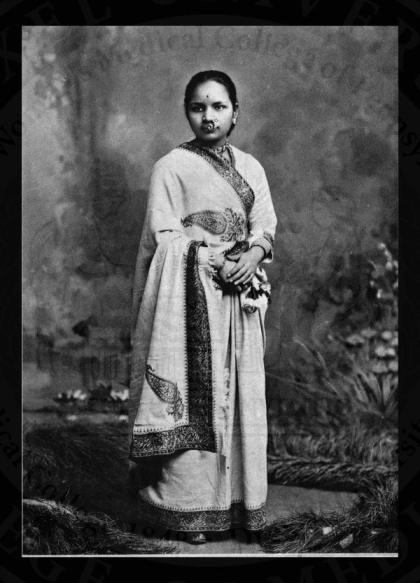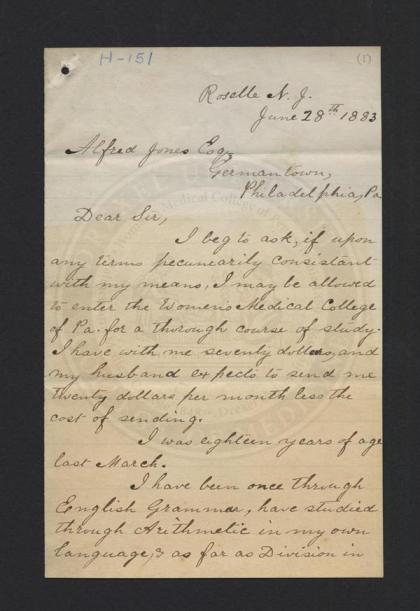Every so often, the same mysterious image seems to pop up on the internet. The black-and-white portrait looks to be at least a hundred years old, and yet, it is of an Indian woman, a Japanese woman and a Syrian woman, sitting in Pennsylvania.

If the timing doesn’t seem quite right, that’s understandable. In 1885, women in the U.S. still couldn’t vote, nor were they encouraged to learn very much. Popular wisdom decreed that studying was a threat to motherhood. Women who went to college, wrote the Harvard gynecologist Edward H. Clarke in 1873, risked “neuralgia, uterine disease, hysteria, and other derangements of the nervous system,” such as infertility. “Because,” went Clarke’s reasoning, in a classic bit of mansplaining titled “Sex In Education,” a woman’s “system never does two things well at the same time.”
So how did our seemingly non-hysterical trio wind up inside a medical school? And that too, from thousands of miles away?
In a report last year for PRI’s The World on the image — which seems to go viral annually — Christopher Woolf credits unsung heroes for making the situation possible: the Quakers, “who believed in women’s rights enough to set up the WMCP way back in 1850 in Germantown.”
“It’s a reminder just how exceptional America was in the 19th century,” Woolf writes. “We often spend so much time remembering all the legitimately bad things in U.S. history. But compared to the rest of the world, America was this inspirational beacon of freedom and equality.”
The first women’s medical college in the world, the WMCP was a magnet for ambitious ladies of all stripes. The three in the photograph — from left to right, Anandibai Joshi, Keiko Okami, and Sabat Islambouli — eventually became the first licensed female doctors in their respective countries: India, Japan and Syria.

You can understand the fascination. On paper, Joshi’s life seems hugely regressive, but in reality it was anything but. She was married off at the age of nine, to a 20-year-old man. Unusually, he believed fervently that she should be educated, and took her lessons on himself.
According to Woolf’s report, what impelled Joshi to pursue medicine was the death of her 10-day old baby, a tragedy that struck when she was herself only 14. As she learned, and as Woolf points out, “medical care for women — even high-caste women like Joshi — was simply unavailable.”
Partly this was an issue of social norms, of women feeling incapable of getting gynecological service from men. In her application letter, excerpted in part at the PRI site, Joshi sells herself as the first step to a solution. Her purpose, she writes, is to return to India that she might “render to my poor suffering country women the true medical aid they so sadly stand in need of and which they would rather die than accept at the hands of a male physician.” (The full excerpt is a masterful example of the self-sale, and worth a read.)

Woolf details the hardships Joshi faced even after getting licensed. According to a Drexel archivist he spoke with, India’s first female physician died of tuberculosis at 21, too young to ever practice. As for the other two women in the internet’s favorite 19th century graduation picture, life wasn’t simple going for them either: Islambouli fell off the university’s radar after moving home, an indication that she likely dropped her career. Okami went on to become head of gynecology at a top Tokyo hospital, only to resign when the reigning emperor refused to meet her during a visit to the hospital, because she was a woman.
The WMCP graduates are the ones we remember though, and for good reason: in a few years, women doctors are poised to outnumber men around the world.
Read more here- http://www.huffingtonpost.com/2014/04/08/19th-century-women-medical-school_n_5093603.html
Leave a Reply